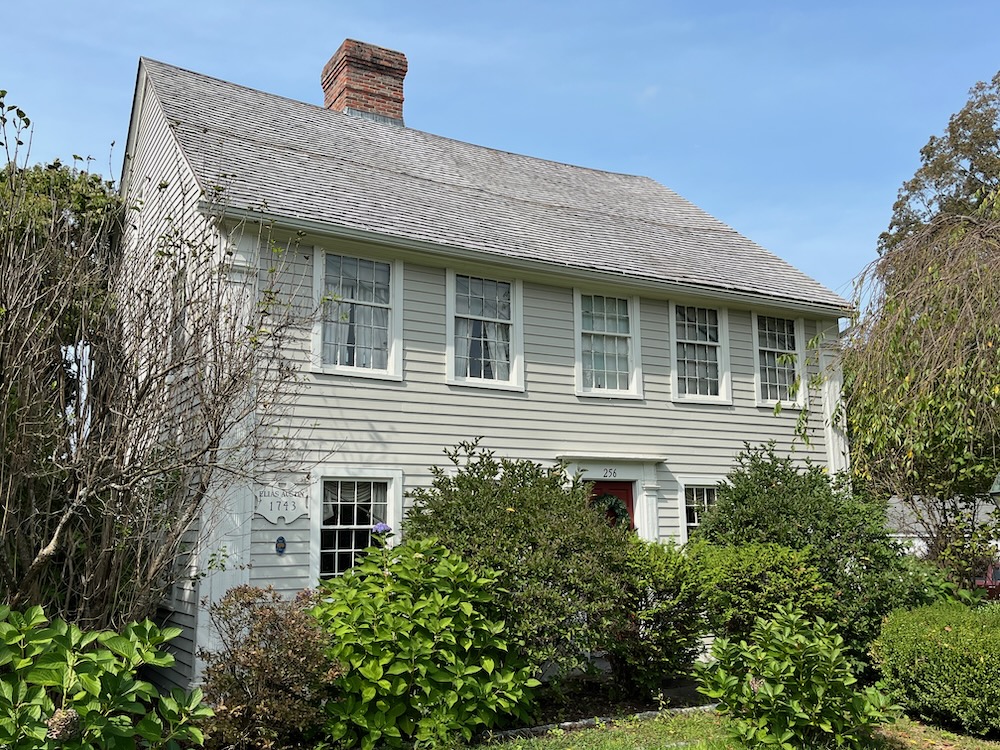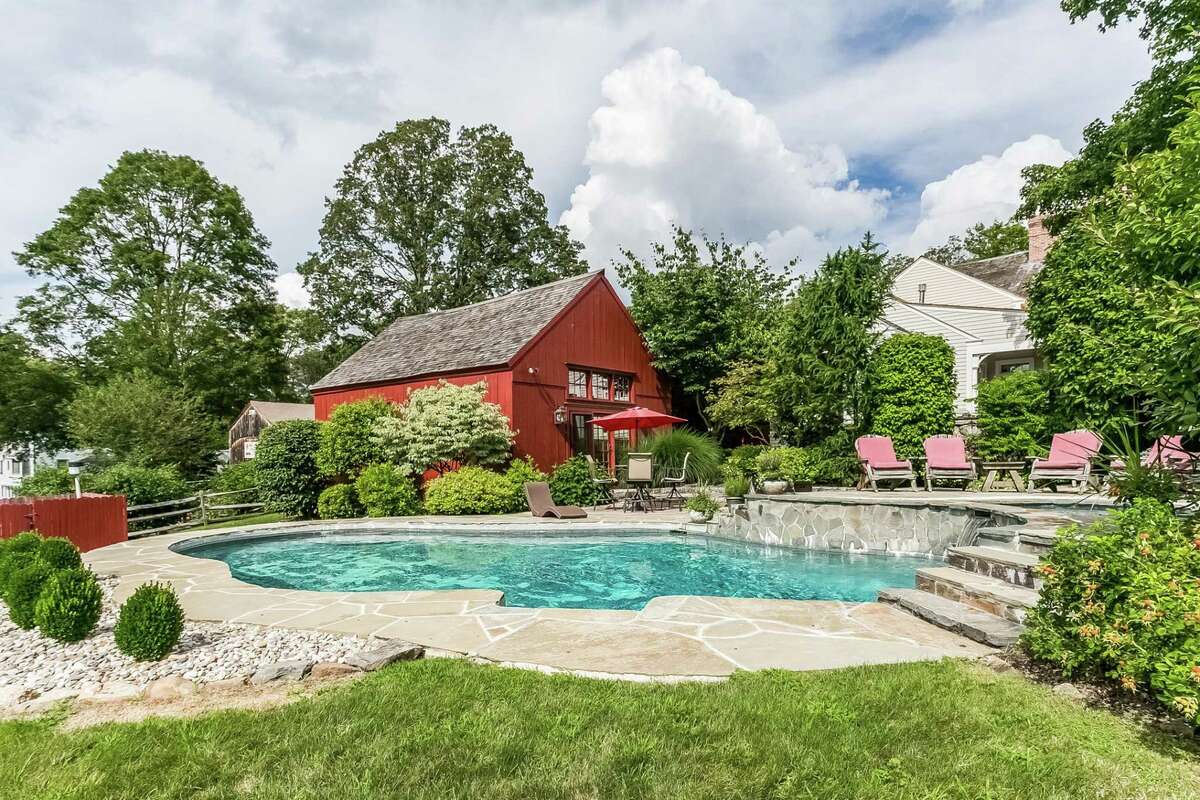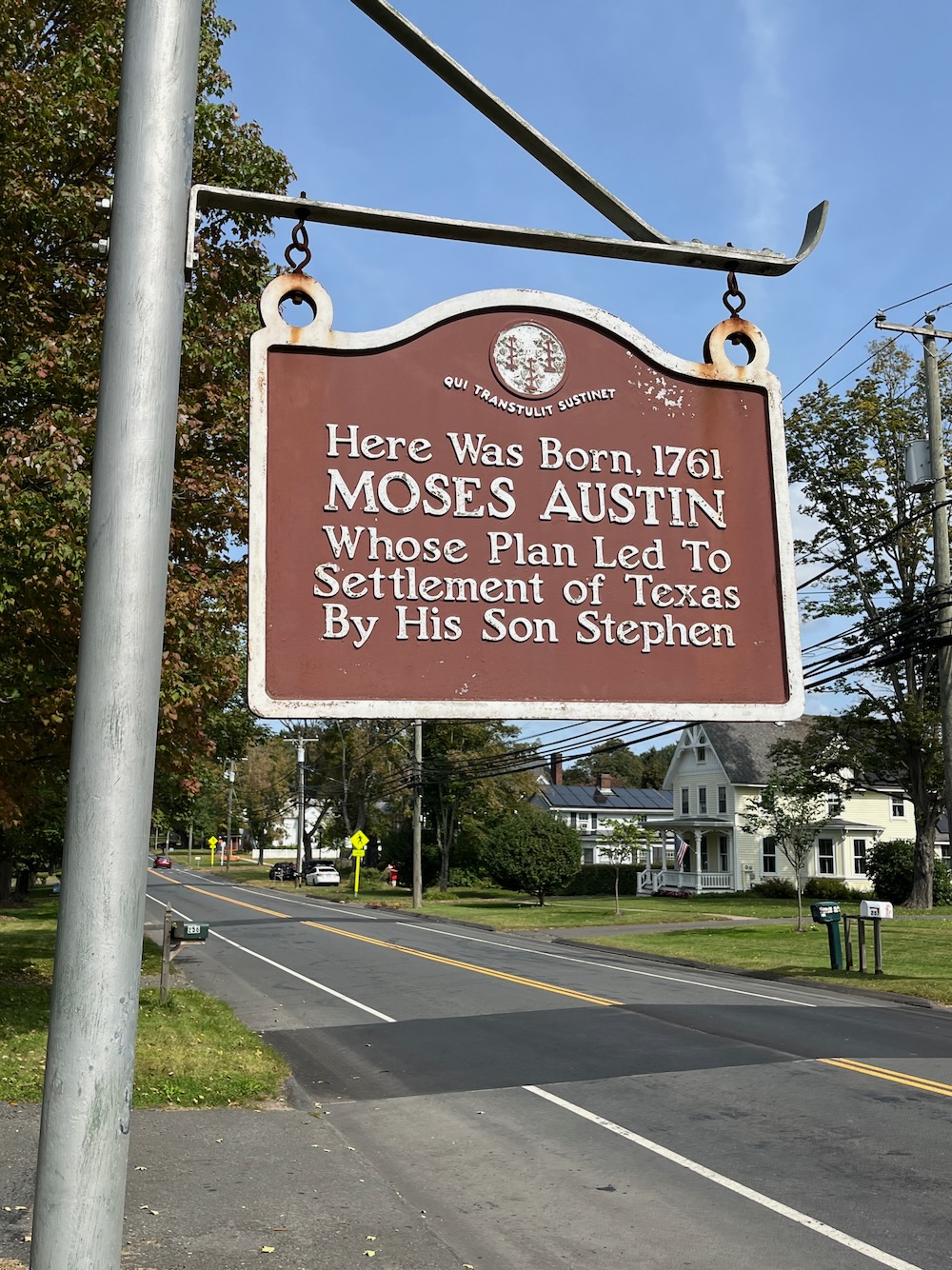SXSW Durham
The Elias/Moses Austin House Durham
This is one of those places I have passed dozens of times and never thought it rose to the level of warranting CTMQ inclusion. And as I write this very sentence you’re reading, I’m still not sure that it does. In fact, it really doesn’t.
But it’s so random and so massively history-adjacent, the fact that the state of Connecticut saw fit to honor it with a sign hung in the front yard… that alone is more interesting than the reason the sign is hung out front. To me anyway.

From Historic Buildings of Connecticut:
The Elias Austin House, also known as the Moses Austin House, was built around 1745 and stands on the west side of Main Street in Durham. Elias Austin purchased the lot in 1743. He was a tailor and farmer, who decided to enter the tavern business since his property sat on the Post Road between New Haven and Hartford. The property passed to his wife and sons when he died in 1766. One of his sons was Moses Austin, who was born in the house in 1761. Moses Austin later left Durham and reached Texas in 1820, where the government of Spanish-controlled Mexico granted him land to settle 300 Anglo-American families. Austin died in 1821, but his son, Stephen F. Austin, fulfilled his father’s dream, becoming known as the “Father of Texas.” The Austin House in Durham was sold out of the family in 1783 and has since had many different owners. The building served as Durham’s post office from 1909 to 1935.
I think you see what I mean. I’m pretty sure no Texas historians or Texas Superfans are flocking to Durham to see the Stephen F. Austin’s father’s and grandfather’s house. But here we are. Reading about it.

From a realtor’s site. Yes, this is really the same house.
Durham’s historic Main Street is pretty and this is just another one of the houses on it. Recent owners of the Austin house undertook a major renovation – within the guidelines of the National Register of Historic Places – returning historic portions of the home to their original design and character. Original doors and hardware were uncovered and repurposed, fireplaces were revealed and hand-hewn chestnut beams became accent beams in the kitchen ceiling.
“Fireplaces?” How many fireplaces do you think there are? Seven. There are seven fireplaces here. There’s also a heated Gunite pool and terraced stone patios in the back. I don’t think Elias Austin had those amenities, but my man had seven fireplaces.
There you have it. If you’ve ever parked and walked to the Durham Fair, or drove slowly though Durham’s historic center trying to figure out which direction at the next dangerous high-speed Y intersection you needed to go, you’ve likely noticed this house and its brown sign. And now you know it’s actually not really all that important at all.

![]()
CTMQ’s Houses, Ruins, Communities & Urban Legends

Leave a Reply